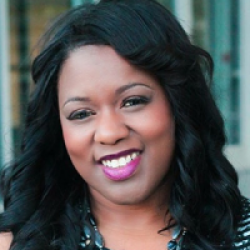How can we keep students who are disengaged from school excited about learning? How can we reach students who struggle in and out of the classroom and who many would say are hard to teach? How can we effectively educate students from disadvantaged backgrounds? Well, those are my students. In order for me to close their wide achievement gap, it was necessary to recognize the students’ varying background knowledge, academic readiness, learning style preference, and interests. I also had to discover a method of teaching that would adapt to my students’ needs and engage them, which led me to Project Based Learning.
Let me share a project that was completed with outstanding results, with my eighth grade science students. The objective of the project was to discover why so many local citizens were getting sick with cancer. Many of the students were always sharing a story about a family member being diagnosed with cancer, so we used this opportunity to inquire more about the environment around us. After collecting research on the entire city, we focused on which area had the highest percentages of people with cancer. We discovered that the most affected area was where the students lived. Local air quality tests showed that harmful chemicals were being released from the neighboring chemical plants. At the end of the project, students presented proposals to local plant workers on actions the plants could do to help lower the risk of the citizens getting sick.
Another project that resulted in effective use of PBL strategies began with collaborative planning session with an ELA teacher. Students wrote a play on renewable energy resources and how they could contribute to saving energy and keep the world’s energy supply from running out. This led to the students' building scale models of solar powered homes as their final product. They were interested and motivated to contribute new home designs to their community and were actively engaged.
Why I Chose PBL for My Students
Why do I choose doing projects like this with my students? Because they are authentic, very engaging, and relevant to the students.
To help you better understand the students in my school, they are from an underprivileged community, as it relates to family income and exposure to different opportunities to participate in social events. Over fifty percent of their parents did not have a high school diploma and only a small percentage had a college degree, so the interest for being successful in school was really low.
In my experience, I have learned that lower socio-economic students are often disengaged at school, because of many factors such as negative environmental impacts, family and social issues that many of them deal with on a daily basis, wide achievement gaps in their academic skills, having little engagement in lesson strategies, lack of intentional strategies to build self-confidence, and having difficulty adjusting to restrictive classroom environments that do not encourage communication. I recognized the importance of addressing each of these critical components to connect with the students and motivate them to try, so engaging them through PBL was key to my success.
Here are some tips for using PBL with students from lower-income backgrounds:
1. Make the activity challenging and the standards aligned, but provide enough scaffolding to meet the students where they are. In my classroom, PBL allowed for the accommodation of different learning styles through various teaching styles. Both of the above projects were challenging to the students, but instructional strategies used by many teachers such as workshops (centers), individual and team assignments, and small group and whole group learning opportunities helped me ensure I was keeping aligned with the standards and students were gaining knowledge of the content. Incorporating these strategies consistently in my teaching yielded 98.5% mastery in achievement on state test scores and 90-95% passage scores in classroom assessments—which included 504 students, many in Special Education.
2. Include collaboration with peers and experts. PBL encourages expert collaboration to give students a deeper understanding of the learning. In the cancer project, students interviewed community partners, an environmental specialist, and chemical plant workers. Inviting experts into the classroom gave value to the students’ perception of the content. Having those high quality conversations with their peers increased engagement, but more so student knowledge.
3. Use protocols. We used protocols throughout our projects to ensure students were focused and guided in an appropriate setting. Protocols are defined by educators as structured conversations and/or learning experiences, and help make collaboration efficient, purposeful, and productive. I use the tuning protocoloften as a peer assessment. In the cancer project, students used the protocol when planning their final presentations. In groups of three, others would listen, respond, and discuss components of the project needed for presentation day.
PBL celebrates student differences instead of hiding or ignoring them, and it provides the forum to meet students where they are and help them grow. In my projects, I was able to teach students how to manage their learning constructively and allow them to deconstruct the content based on their understanding, which increased their motivation and engagement. My ability to reach students at all academic levels has improved drastically by incorporating Project Based Learning.

